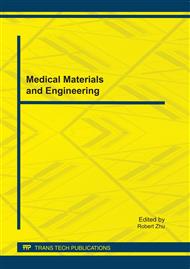[1]
Y. Wang, Q. Zhang. The varieties and culture of raspberry and blackberry (in Chinese). Beijing: Golden Shield Press. 2003.
Google Scholar
[2]
G. H. Bae. Medical plants of Korea. Seoul: Kyohak Publishing Co., Ltd. 2000.
Google Scholar
[3]
I. M. Heinonen, P. J. Lehtonen, A. I. Hopia. Antioxidant activity of berry and fruit wines and liquors. J Agric Food Chem. 46. 1998. 25-31.
DOI: 10.1021/jf970489o
Google Scholar
[4]
I. Yoon, J. Y. Cho, J. H. Kuk, et al. Identification and activity of antioxidative compounds from Rubus coreanum fruit. Korean J Food Sci Technol. 34. 2002. 898-904.
Google Scholar
[5]
T. H. Rissanen, S. Voutilainen, J. K. Virtanen, et al. Low intake of fruits, berries and vegetables is associated with excess mortality in men: the Kuopioischaemic heart disease risk factor (KIHD) study. J Nutr. 133. 2003. 199-204.
DOI: 10.1093/jn/133.1.199
Google Scholar
[6]
M. L. Dreher. Functional foods: designing foods for improving health function: overview. Journal of Nutraceuticals, Functional & Medical Foods. 1(2). 1997. 3-5.
DOI: 10.1300/j133v01n02_02
Google Scholar
[7]
B. D. Oomah, S. Ladet, D. V. Godfrey. Characteristics of raspberry (Rubus idaeus L.) seed oil. Food Chemistry. 69. 2000. 187-193.
DOI: 10.1016/s0308-8146(99)00260-5
Google Scholar
[8]
H. Pourrat, A. P. Carnt. Composition chimique de l'huile de pe´pins de framboise (Rubus idaeus L. Rosacees). R Fr Corps Gras 28. 1981. 477-479.
Google Scholar
[9]
A. Johansson, P. Laakso, H. Kallio. Characterization of seed oils of wild, edible Finish berries. Z Lebensm Unters Forsch A. 204. 1997. 300-307.
DOI: 10.1007/s002170050081
Google Scholar
[10]
H. K. Hall, G. Langford. The 'Boysenberry': Development of the Cultivar and Industries in California, Oregon and New Zealand. Acta Horticulturae, 777. 2008. 103-108.
DOI: 10.17660/actahortic.2008.777.12
Google Scholar
[11]
B. S. Bushman, B. Phillips, T. Isbell, et al. Chemical composition of caneberry (Rubus spp.) seeds and oils and their antioxidant potential. Journal of Agricultural and Food Chemistry. 52. 2004. 7982-7987.
DOI: 10.1021/jf049149a
Google Scholar


